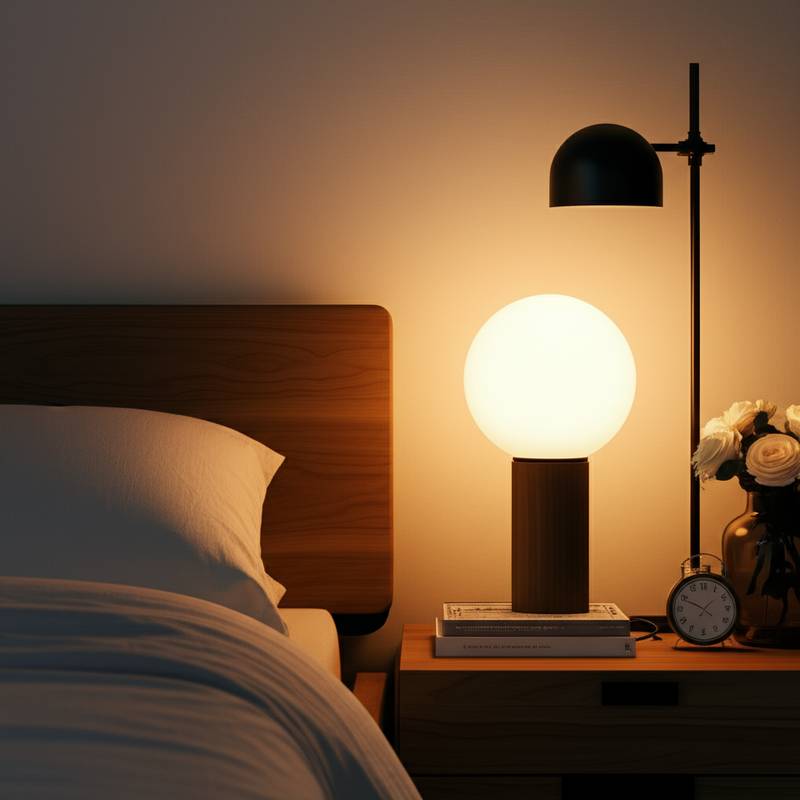Experience 85% Better Sleep with Circadian Lighting
Imagine lying in bed and staring at the ceiling, wondering why the body feels wide awake despite exhaustion. The room remains dark, and the phone stays off, yet sleep refuses to arrive. Many individuals face this challenge with poor sleep quality, often unaware that lighting habits contribute to the issue. The light encountered throughout the day and before bedtime can support or disrupt the natural sleep rhythm.
The Connection Between Light Exposure and Sleep Cycles
The body operates on a 24-hour internal clock known as the circadian rhythm. This rhythm dictates wakefulness, meal times, and rest periods. Light serves as the primary cue that regulates this cycle. Bright light rich in blue wavelengths promotes alertness and concentration during daylight hours. In contrast, dimmer, warmer light at night stimulates melatonin production, the hormone responsible for inducing sleepiness.
Most households depend on fixed lighting systems. Conventional LED bulbs frequently produce cool white illumination resembling daylight, even during evening hours. Such exposure deceives the brain into perceiving ongoing daytime conditions, which postpones melatonin secretion and complicates the process of falling asleep. Prolonged misalignment results in chronic fatigue, mood fluctuations, and diminished focus.
Implementing Circadian Lighting Systems
Circadian lighting represents an advancement in smart home technology that harmonizes indoor illumination with biological rhythms. Systems adjust color temperature and intensity automatically across the day. Mornings feature invigorating cool white light to enhance energy levels. Evenings transition to soothing amber hues that encourage relaxation. This approach creates an environment aligned with physiological needs rather than opposing them.
Such systems belong to the smart lighting category, incorporating connected bulbs, control interfaces, and sensors for dynamic adjustments. Implementation begins modestly in a single room and expands based on observed improvements.
Steps to Integrate Circadian Lighting at Home
-
Evaluate Existing Fixtures
Examine spaces frequented most often, such as bedrooms, living areas, and workspaces. Identify current bulb types and installations. Prioritize replacing any cool white sources used after sunset. -
Select Appropriate Smart Bulbs
Options span budget, mid-range, and premium levels.
- Budget Selection: Philips Wiz Tunable White Bulb, priced at approximately $12 per unit. Wi-Fi connectivity enables app-based scheduling of color shifts.
- Mid-Range Choice: Nanoleaf Essentials A19 Smart Bulb, around $20 each. Thread protocol ensures reliable performance with Apple Home or Google Home setups.
- Premium Option: Philips Hue White Ambiance Starter Kit, about $180 for four bulbs and a bridge. Broad compatibility includes adaptive features that follow circadian patterns.
-
Handle Installation and Initial Setup
Smart bulbs fit standard sockets. Connect via the app to Wi-Fi or a hub. Configure daily schedules to replicate natural light progressions. Activate adaptive modes if available, which respond to geographic location. -
Optimize Settings for Enhanced Sleep
Evenings require 1800 to 2700 Kelvin for a gentle, flame-like warmth. Mornings demand higher brightness at 5000 Kelvin to simulate clear daylight. These adjustments regulate melatonin effectively and elevate sleep depth.
Expert Recommendations for Optimal Results
Position intense task lights away from direct view after sunset to prevent rhythm disruption. A solitary cool desk lamp suffices to interfere. For bedroom screens or televisions, activate night modes to minimize blue light output, supporting the overall lighting strategy.
Integrate circadian systems with automated shades for amplified effects. Gradual morning blind openings mimic sunrise awakenings. Lutron Serena or IKEA Fyrtur models, starting at $150 per window, connect seamlessly with lighting controls.
Key Factors to Consider Prior to Installation
Cost Overview: Entry-level setups with Wi-Fi bulbs cost under $50. Comprehensive home configurations with advanced bulbs and hubs range from $400 to $900, scaled by room count.
Installation Duration: Each room requires less than one hour. Schedule refinements demand initial adjustments but operate autonomously thereafter.
Safety Measures: Disconnect power sources before bulb changes. Engage a licensed electrician for recessed or wired installations.
System Compatibility: Verify alignment with preferred platforms. Philips Hue integrates with Amazon Alexa, Google Assistant, and Apple HomeKit. Nanoleaf adheres to Matter and Thread standards for enduring versatility.
Scientific Foundation of Circadian Lighting Benefits
Claims of up to 85% sleep improvement stem from studies on light's influence over melatonin and rhythm stability. Uniform light exposure fosters consistent cycles, curbing evening vigilance and invigorating mornings. Users commonly note quicker sleep onset, refreshed awakenings, and reduced daytime lethargy.
Consistency proves essential. Adhere to lighting routines, limit screen exposure one hour before bedtime, and allow illumination to steer natural responses.
Extending Circadian Lighting to Additional Spaces
Beyond bedrooms, apply these principles elsewhere for broader gains. Kitchen mornings with vivid light heighten awareness during meal preparation. Office environments benefit from adaptive illumination that eases eye fatigue and sustains productivity.
Bathrooms gain from tunable setups shifting from mellow dawn tones to stimulating brightness. Develop scene automations for versatility. A relaxation scene lowers intensity to 30% at 2200 Kelvin for quiet activities. A wake scene initiates progressive brightening akin to dawn. Personalization renders the system responsive and tailored.
Steps to Achieve Lasting Improvements
Adopting circadian lighting transcends gadget novelty; it fosters a supportive living space for daily well-being. Initiate in one area, test variations in hue and timing, and monitor bodily feedback. Profound shifts emerge with persistence.
For assistance, consult specialists in human-centric lighting. Platforms like HomeAdvisor or Thumbtack connect users to qualified installers for wiring, programming, and integration.
Frequently Asked Questions
What exactly is circadian lighting? Circadian lighting dynamically adjusts indoor light to match the body's 24-hour rhythm, promoting better health outcomes.
How does it differ from standard smart bulbs? While basic smart bulbs offer on-off and dimming, circadian versions automate color and temperature changes based on time and biology.
Can it really improve sleep by 85%? Research supports substantial gains through rhythm alignment, though individual results vary with consistent use.
Is installation complicated? Most setups involve simple bulb swaps and app configurations, completable in under an hour per room.
What if I have a small budget? Start with affordable Wi-Fi bulbs like Philips Wiz to test benefits before expanding.
